

There are over 30000 species of bee worldwide, and over 250 of these occur in Britain. Unlike wasps, which are mainly insectivorous, all bees live entirely on a diet of pollen and nectar.
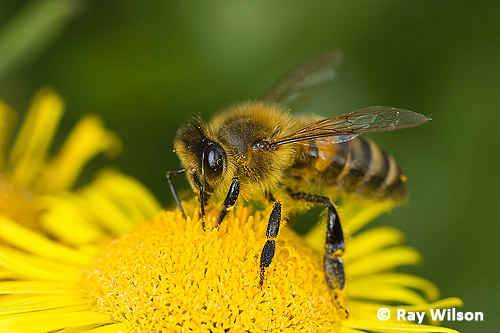
The best know, and most economically important, bee is the common honeybee, Apis mellifera. Honeybees are a major pollinator of many comercial fruit and nut crops and many of these industries rely almost entirely on these insects. In recent years, there has been huge concern over an enormous reduction on the population of honeybees from what has been dubbed Colony Collapse Disorder (CCD) due to the sudden and unexpected desertion of hives. Numerous theories have emerged to attempt to explain these catastrophic losses, but recent (August 2009) research results indicate that honeybees from colonies prone to CCD contain unusually high levels of fragmented ribosomal RNA, a symptom of infection with multiple picorna-like viruses. Picorna-like viruses are often transmitted to bees via the varroa mite, a parasite of honeybee hives and a huge problem for bee-keepers, indicating that the viral infections may just be the final straw in already stressed colonies.
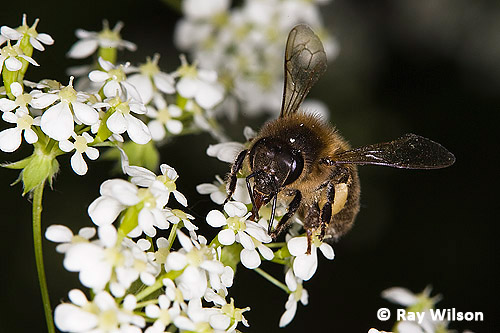
Another group of familiar social bees are the bumblebees. Bumblebees are found throughout most of the northern temperate zones of Eurasia and North America, and of the 300 species worldwide 25 occur in Britain.
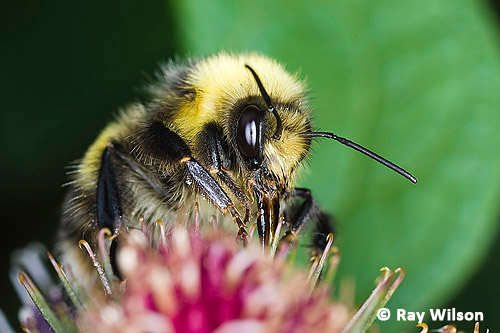
Bumblebees are among many peoples favourite insects due to their rotund, furry appearance and non-aggressive tendencies (bumblebees generally only sting if severely molested) further enhance their appeal.
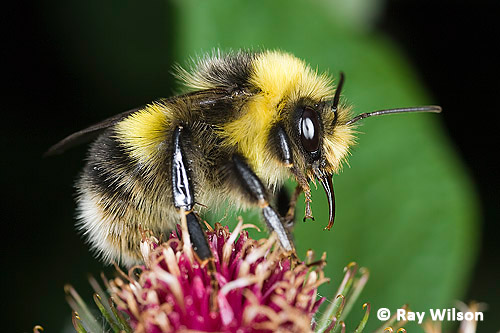
Bumblebee colonies tend to be quite small (rarely more than a few hundred workers at any one time) and, in temperate climates, remain viable for less than one year. The nests are generally situated in dissused small mammal or bird nests.
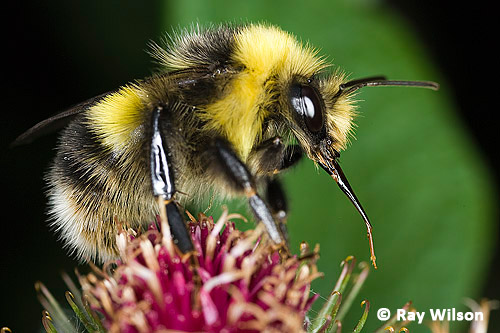
Bombus leucorum and the scarer Bombus magnus are very similar species and there is currently no way of distinguishing males of these species. In fact, there is considerable doubt as to whether they are distinct species and some authorities treat them as a single species.
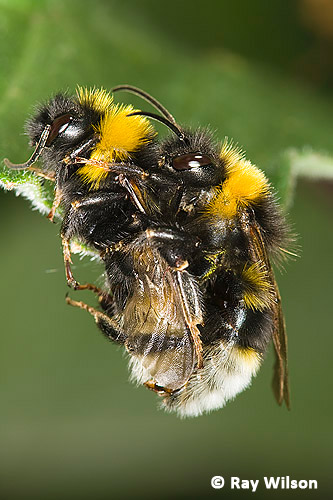 |
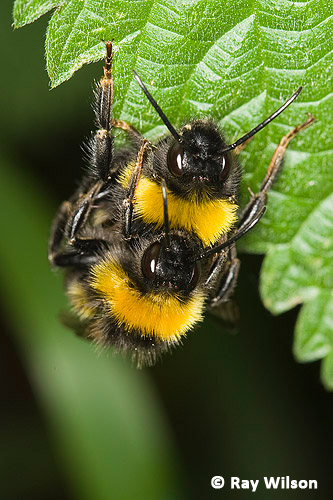 |
Bombus terrestris is Britain's largest bee and a mating pair are a rather impressive sight as they bumble clumsily among the foliage, often falling off leaves that cannot hold their combined weight.
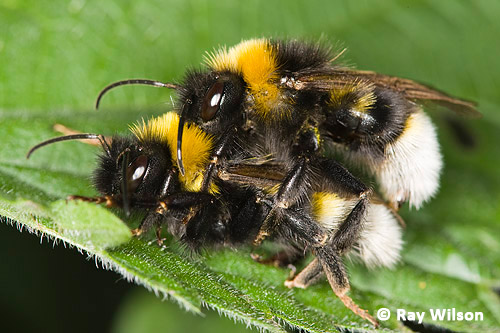
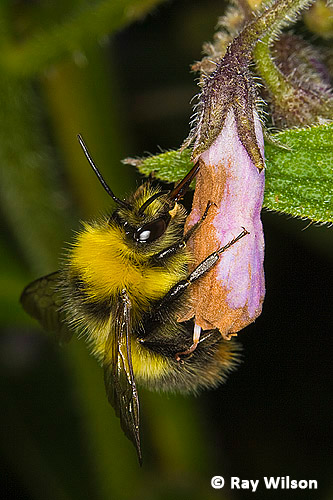
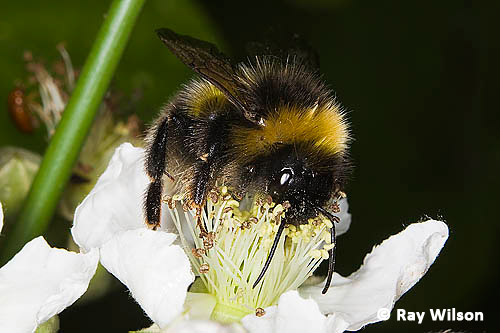
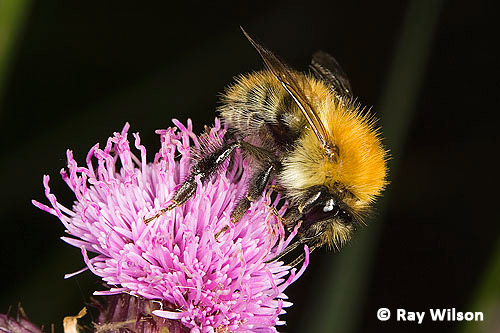
Bombus pascuorum is distinctive in being the only common British bumblebee to have a uniformly gingery-brown covering of hair on the thorax. Its common name is derived from their habit of "carding" material from around their nests to use as a covering for their larval cells. Carding is a technical term taken from the textile industry to describe the mechanical process of breaking up clumps of fibre by combing.
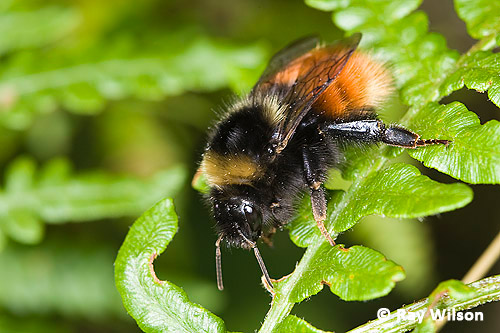
Bombus monticola is another quite distinctive species. It is a specialist of more upland habitats and, as one of its common names suggest, is often found foraging on heather and bilberry flowers.
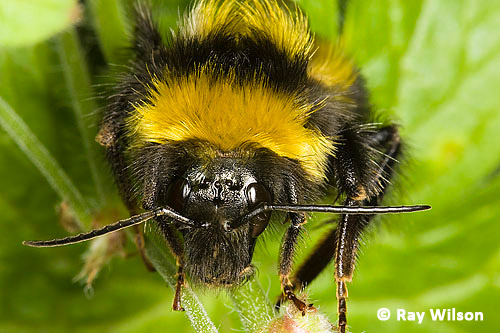
Male bumblebees take no part in the maintenance of the colony and spend all their time searching for a mate. They generally spend the night sleeping outdoors clinging to the undersides of flowers or leaves, and can easily be photographed in the early mornings while they are still cold and torpid.
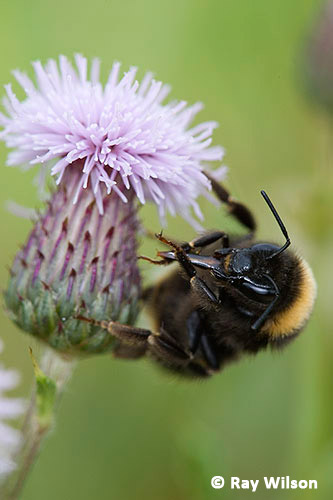 Buff-tailed Bumblebee (Bombus terrestris) worker |
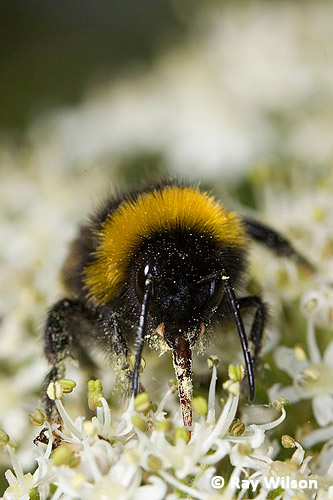 Buff-tailed Bumblebee (Bombus terrestris) |
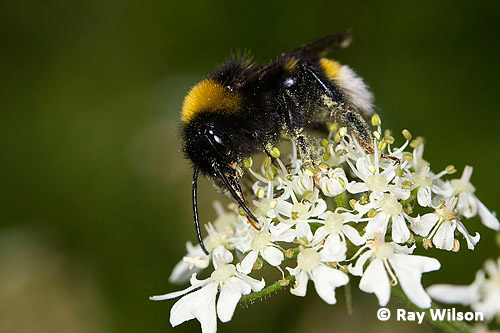
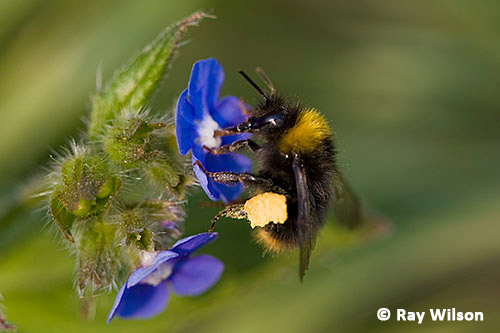
Although less noticable than the social bees, the vast majority of bee species are solitary in nature. Many of these have short flight periods and are only on the wing for a few weeks each year, such as the Nomada bee below.
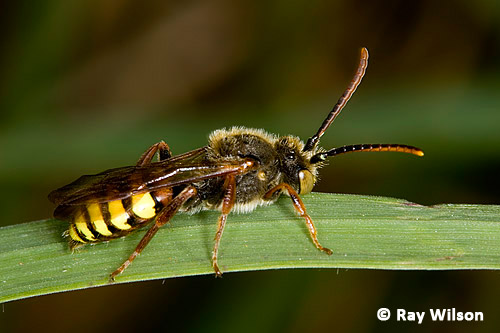
Ray Wilson owns the copyright of all images on this site.
They may not be used or copied in any form without prior written permission.
raywilsonphotography@googlemail.com